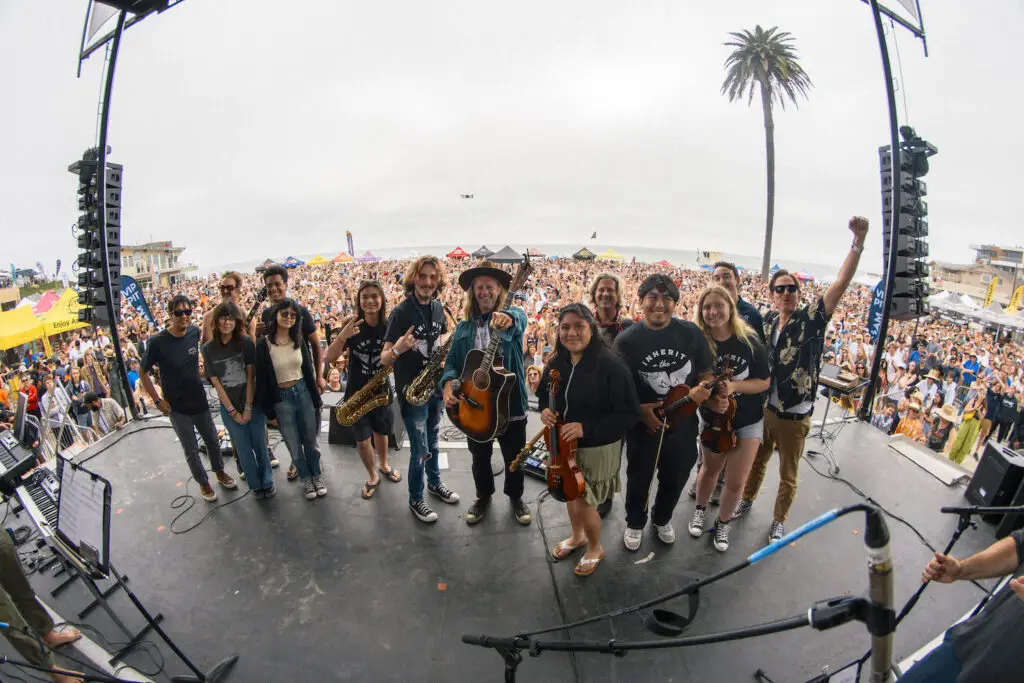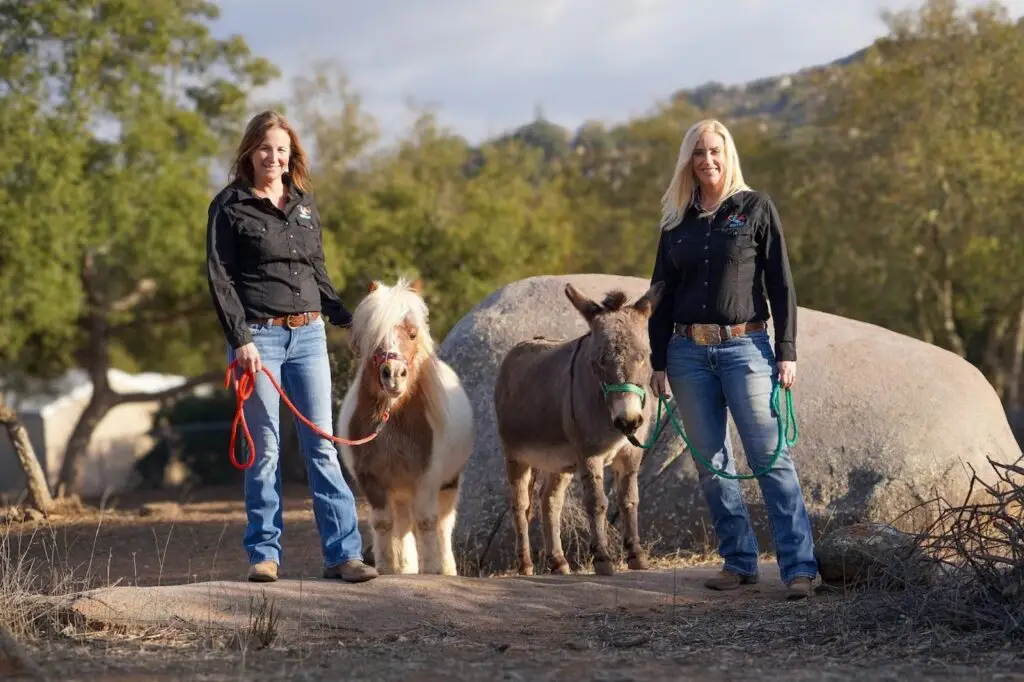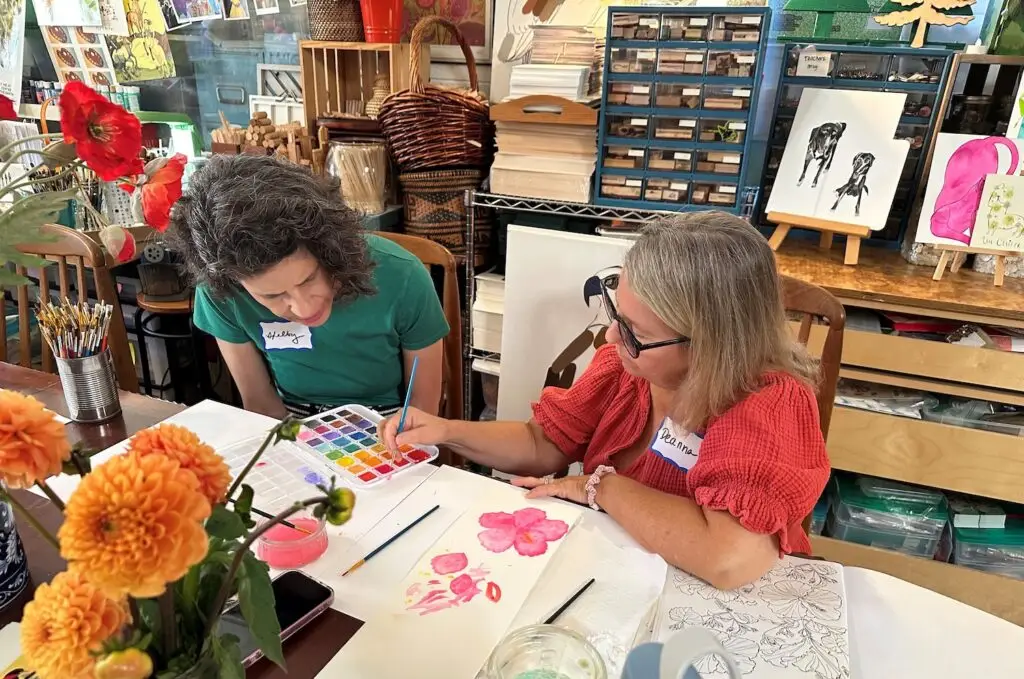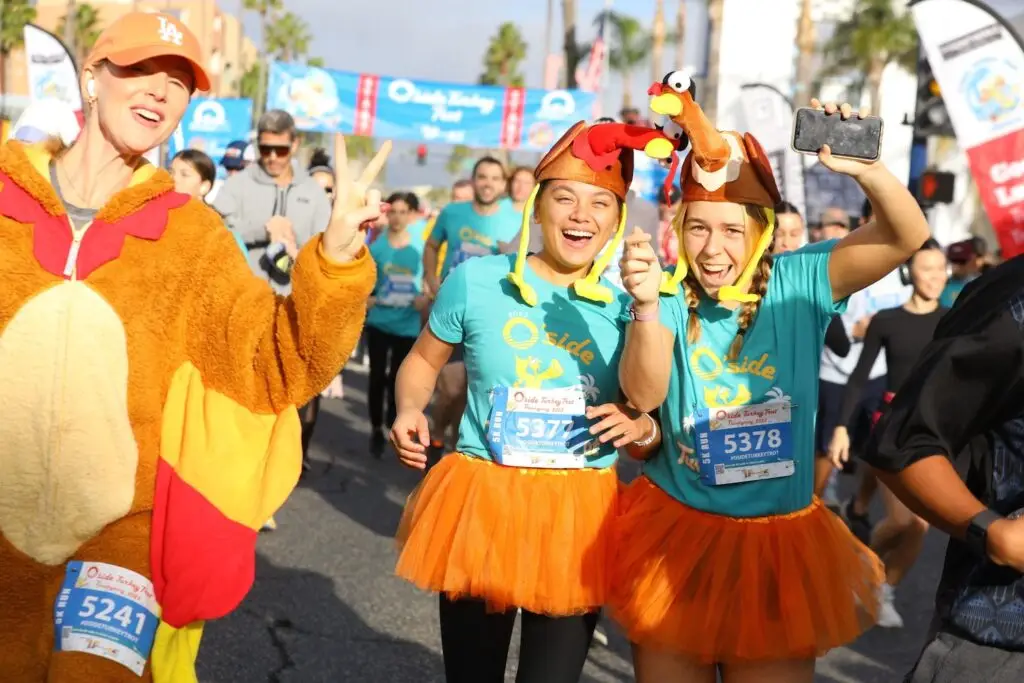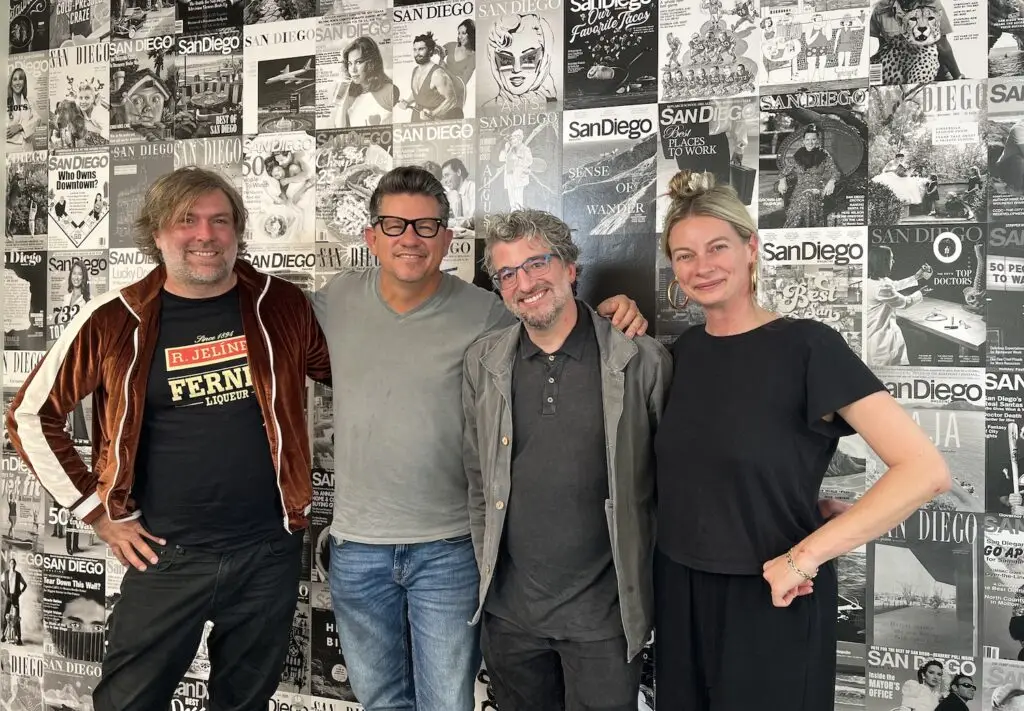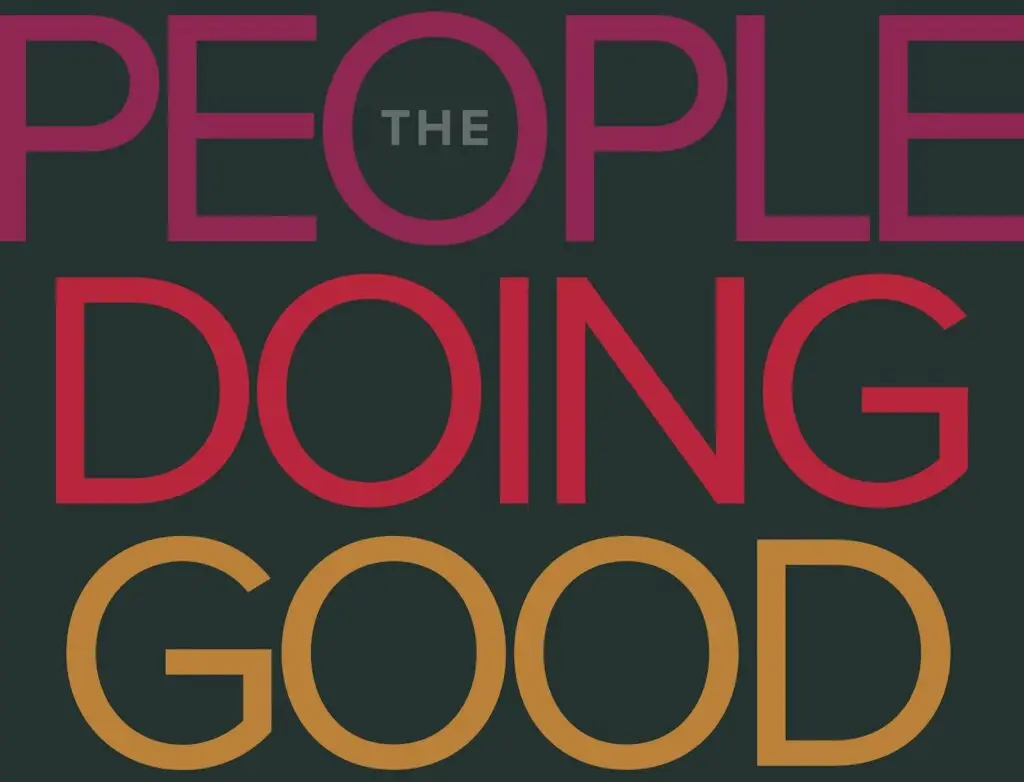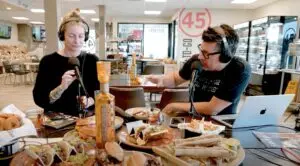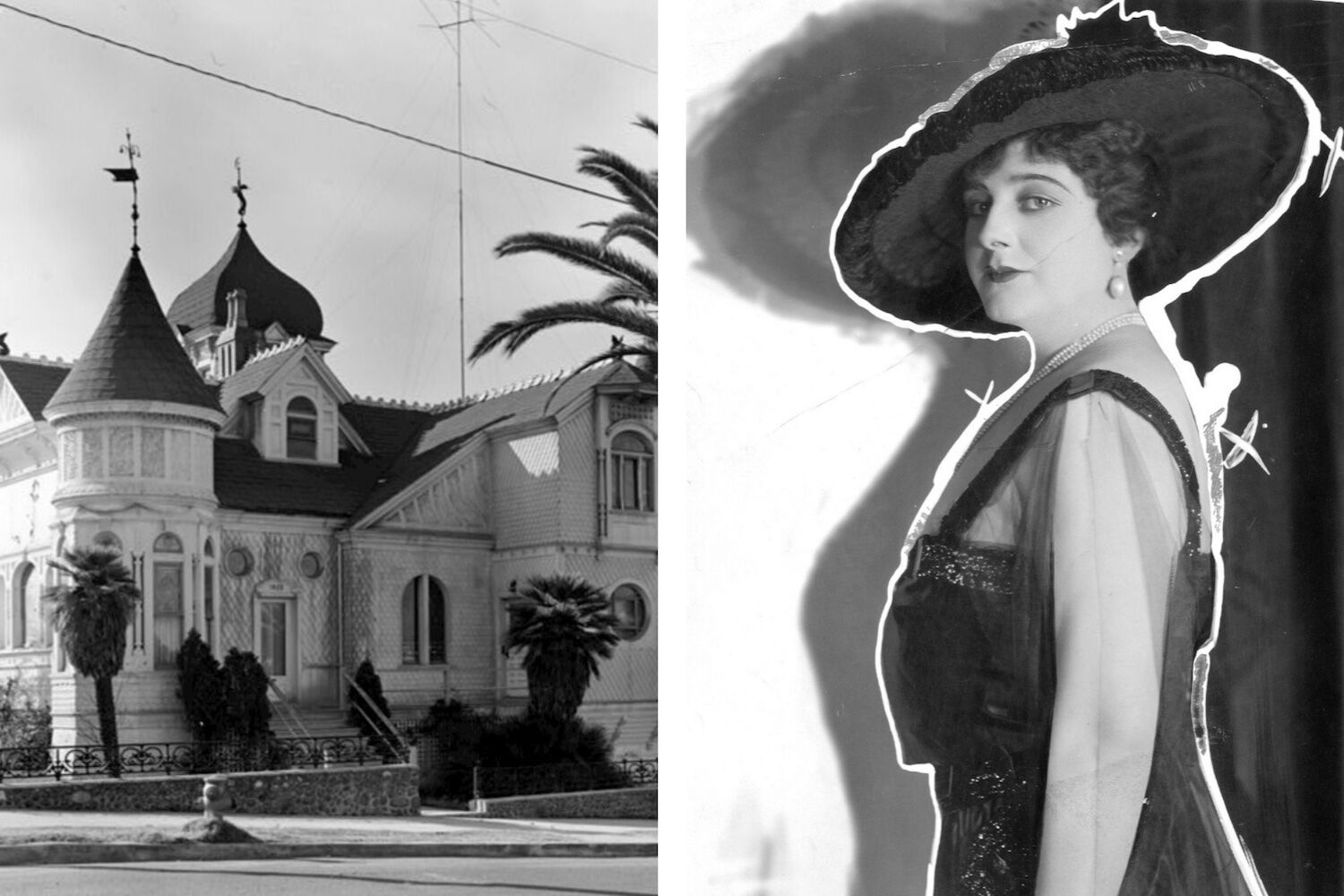
The Villa Montezuma house (left) and female impersonator and Alpine resident Julian Eltinge (right)
Wikimedia Commons and the Los Angeles Public Library, Herald-Examiner Photo Collection
Two progressive, upper-crust women who hosted a former president and first lady at their home at the edge of Balboa Park. A spiritualist who channeled famous composers and built one of the most stunning mansions in San Diego for himself and his companion. A celebrity female impersonator who’s still the talk of East County history buffs. And a La Jolla physician whose stunning secret made front-page news from coast to coast.
Meet the early LGBTQ – or at least LGBTQ-adjacent – pioneers of San Diego. They each lived here about a century ago, long before most people thought “gay” was anything other than festive. We know nothing about their intimate physical relationships, but it’s clear they lived lives that would be considered alternative in their time – and ours.
In honor of San Diego Pride this week, here’s a closer look at six LGBTQ pioneers.
Alice Lee & Katherine Teats: The Dynamo and Her Partner
Alice Lee, a second cousin of President Theodore Roosevelt’s first wife, had connections in high places. She forged friendships with the Roosevelt family, Florence Nightingale, Ralph Waldo Emerson, and President Grover Cleveland and his wife Frances. She moved west to San Diego around 1902, possibly due to her poor health. If that was the reason, she had company in the thousands of others who flocked here to soak up our supposed healing powers. One savvy promoter, the city’s official physician, claimed that ultra-fit locals had “lungs like a blacksmith’s bellows and hearts as tough as that of a turtle.”
Around 1900, Lee met a woman named Katherine Teats and spent the rest of her life with her. Teats lived a low-profile life, while Lee advocated progressive causes and joined local charity boards galore. She led the influential Save the Beaches movement to keep the coast out of private hands and founded a public forum that lasted into the 1970s.
Lee and Teats spent decades living in a home on Seventh Avenue at the northwestern edge of Balboa Park. There, they hosted Theodore Roosevelt and his second wife Edith when they visited town for the 1915 Panama-California Exposition that gave us modern Balboa Park. (There’s a brief film of Roosevelt’s visit that shows him and a lady with a rather remarkable hat.)
Were Lee and Teats a romantic couple? Teats’ grand-niece told the late local historian Sarai Johnson that family lore considered the pair to be lesbians, and a census form described Teats as Lee’s “partner.” But then, as now, we can’t make assumptions about the intimate lives of private people.
Still, it’s clear they had what was known then as a “Boston marriage” – a partnership between two wealthy women that may or may not have been physically intimate. It’s likely that “most people outside of the relationship didn’t dwell on the sexual possibilities of the relationship. They didn’t think of two women living together as pathological as they did when I was growing up in the 1950s,” said Lillian Faderman, a retired La Jolla professor who’s considered “the mother of lesbian history.” (See our 2021 Q&A with her.)
There are many other examples of female same-sex relationships. “I just find these late 19th- and early 20th-century women so awesome,” Faderman said. “They refused to confirm to what society expected. They might have been seen as somewhat odd, but not unrespectable. They managed to maintain their role in their society. They’re our foremothers.”
The Spiritualist & His Devoted ‘Secretary’: A Lofty Legacy
Jesse Shepard, a spiritualist and musician who performed for a Russian czar and a future British king, didn’t spend long in San Diego with his devoted “secretary” Lawrence W. Tonner. But the pair spent a busy and influential two years here in the late 1880s. Thanks to them, the Sherman Heights neighborhood is home to Villa Montezuma, one of the most impressive and well-preserved Victorian houses in San Diego.
Shepard came to town as a well-known spiritualist who “sometimes claimed that the spirits of famous composers or pianists performed through him,” according to a 1987 article in the Journal of San Diego History. He traveled throughout Europe, performing for famous people such as royalty and the novelist Alexander Dumas.
Spiritualism was hugely popular around the turn of the 20th century, and many celebrities like Arthur Conan Doyle embraced the idea of communicating with the dead. But Shepard abandoned spiritualism while in San Diego and turned to another focus: building Villa Montezuma. He didn’t own it for long, however: Shepard sold it in 1889, a year after the San Diego real estate market went bust.
Little is known about Tonner or their relationship, which lasted until Shepard died in 1927 while playing the piano at a recital. “Many wealthy gay men deemed their partners their chauffeur, assistant, or secretary,” Faderman said. “Jesse Shepard must have assumed he’d get away with it because of that, and I imagine straight people believed it.”
Villa Montezuma, with its grand Queen Anne gables, is now a city-owned museum.
The Female Impersonator: Building a Mystery
One of the most famous performers of the early 20th century had a surprise up her sleeve: She wasn’t what she appeared to be. The classy, graceful woman on stage was actually a man who went by the name Julian Eltinge. Audiences knew this going in, but they were still stunned.
Randy Dotinga is a freelance contributor to Voice of San Diego. Please contact him directly at [email protected]. This story was first published by Voice of San Diego. Sign up for VOSD’s newsletters here.

PARTNER CONTENT
VOSD Logo



